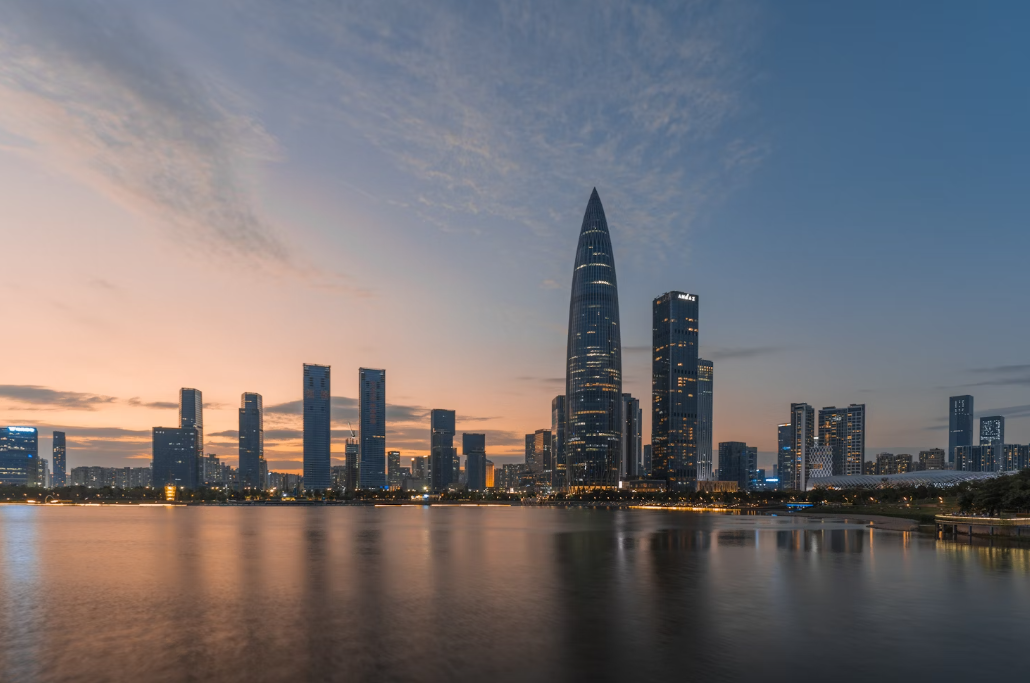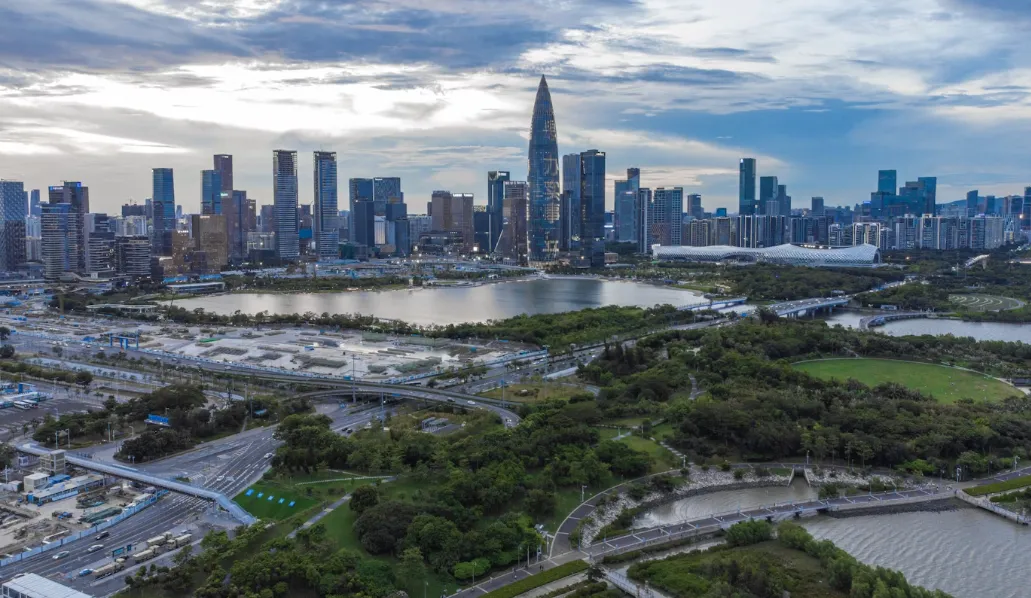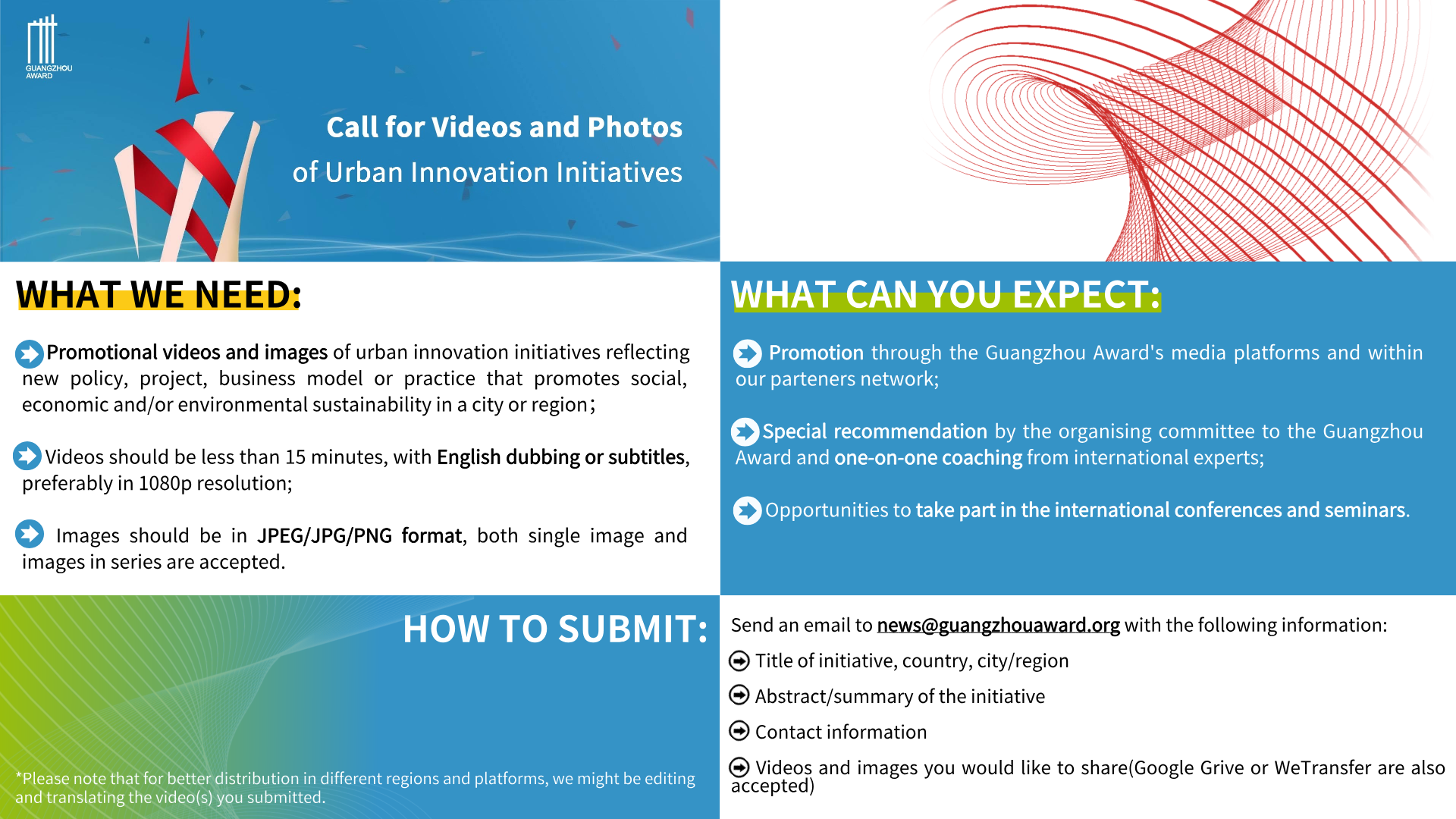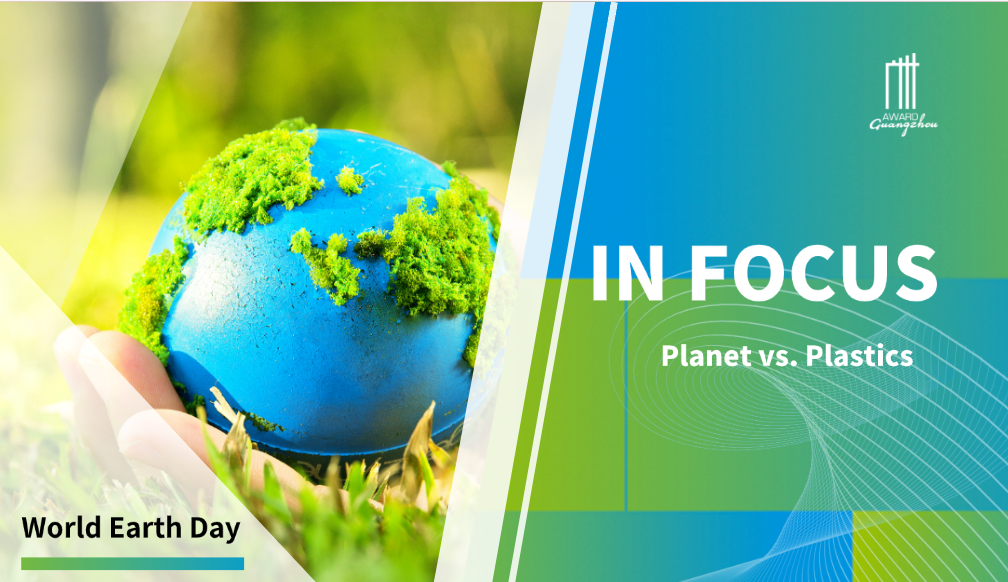Urban Innovation in China | Shenzhen: How to Maintain Momentum to Achieve Carbon Peak by 2030 While Leading Green and Low-Carbon Development?
Nowadays, the process of urbanization is developing rapidly, yet the common issues in urban governance are highly unified. The world is facing challenges such as climate and environmental changes, the updating of urban governance models under technological iterations, and the issues of imbalance in the process of urbanization.
Against this backdrop, Chinese cities have produced a series of achievements and experiences by adhering to high-level openness and high-quality development in the process of advancing the Chinese path to modernization, which provides solutions to various global issues related to urbanization.
In this column, we will focus on excellent urban innovation cases in China and showcase the innovation capabilities of Chinese cities.

Shenzhen is at the forefront of green and low-carbon development in China.
According to the 2021 and 2022 China Net Zero Carbon City Development Reports released by the 21st Century Economic Research Institute, Shenzhen has continuously maintained its leading position as the top-ranked city.
As early as 2020, Shenzhen’s energy consumption intensity and carbon emission intensity had reached the optimal level among the megacities nationwide, with the energy consumption and carbon emission intensity per 10,000 yuan of GDP being only one-third and one-fifth of the national averages, respectively.
In 2023, Shenzhen accelerated its layout for the construction of a “near-zero carbon” city. The goals outlined in the “Shenzhen Carbon Peak Implementation Plan” are as follows: By 2025, the energy consumption per unit of regional GDP will be reduced by 14.5% compared to 2020, and the carbon dioxide emissions per unit of regional GDP will meet national and provincial targets, laying a solid foundation for achieving the carbon peak. By 2030, Shenzhen aims to demonstrate advanced levels of carbon emission control per unit of GDP nationwide and provincially, setting an example for achieving the carbon peak by 2030.
Facing these new targets, how will Shenzhen proceed with its actions?
Leading the Green Industry
As a benchmark city for green and low-carbon development, Shenzhen is leading the pack. Data reveals that Shenzhen’s energy consumption and carbon emissions per unit of GDP are only one-third and one-fifth of the national average, respectively. Meanwhile, the total urban energy consumption in Shenzhen has remained stable, ranging from 40 million to 50 million tons of standard coal between 2019 and 2021.
A detailed analysis of Shenzhen’s energy consumption structure reveals that the low energy consumption of the secondary industry is a significant factor. In 2021, Shenzhen’s energy consumption per unit of GDP in the secondary industry was 0.13, lower than Beijing’s 0.239. This is primarily determined by Shenzhen’s pillar industries. From the perspective of industrial structure, Shenzhen is dominated by computer, communication, and other electronic equipment manufacturing industries. Compared to cities whose leading industries are steel, cement, chemicals, and other high-energy-consuming sectors, Shenzhen’s pillar industries are more energy-efficient and low-emission.
The key reason Shenzhen leads the green industry is that its continuous promotion of industrial structural transformation and upgrading stems from its pursuit of high-quality industrial development. This can be seen from the evolution of Shenzhen’s industrial development path, from the early stage of the “Three-plus-one” trading-mix to the emergence of the electronic information industry as a key driver of urban development, and now to the rapid growth of strategic emerging industries. Shenzhen has been pursuing high-quality industrial development, shifting from labor-intensive to capital-intensive models, and now relying on innovation to drive industrial growth. On one hand, Shenzhen has continuously phased out and transformed low-end and high-consumption enterprises. Data shows that during the 12th Five-Year Plan period, Shenzhen eliminated and transformed over 17,000 low-end enterprises, with industries such as steel, cement, electrolytic aluminum, and coal basically exiting, and with energy consumption and carbon emission intensity being in a state of constant decline. On the other hand, Shenzhen has continuously promoted industrial upgrading and transformation, forming a high-tech industry dominated by strategic emerging industries. Data shows that in 2023, the added value of Shenzhen’s strategic emerging industries reached 1.448968 trillion yuan, accounting for more than 41.9% of GDP.
“The essence of high-quality industrial development is also the development of green and low-carbon industries,” said Wei Fulei, director of the Fiscal, Taxation, Trade, and Industrial Development Research Center of China Development Institute, in an interview with the 21st Century Business Herald. During the exploration of industrial upgrading towards green and low-carbon development, many industries in Shenzhen have continued to upgrade, fostering a positive cycle of new industrial advantages, with the new energy industry’s emergence as a competitive strength exemplifying this trend. According to the Shenzhen Green and Low-Carbon Development Annual Report (2023) released by the Development Research Think Tank of China, the added value of Shenzhen’s green and low-carbon industries reached 173.1 billion yuan in 2022, an increase of 16.1% year-on-year. Among them, the added value of the two major industrial clusters of intelligent and connected vehicles (46.1%) and new energy (16.1%) achieved double-digit growth, giving birth to a series of industry-leading companies, such as BYD, the world’s top-selling new energy vehicle manufacturer in 2023.
Chen Shuling, a distinguished researcher at the Institute for Carbon-Neutral Technology of Shenzhen Polytechnic University, told the 21st Century Business Herald that Shenzhen is promoting the development of green industrial clusters, nurturing internationally competitive enterprises and brands, strengthening advantageous industries such as smart connectivity, new energy storage, and photovoltaics, and continuously cultivating and developing the hydrogen economy. Especially given its economy is primarily based on manufacturing, Chen Shuling suggests that Shenzhen should innovate in recycling technologies for electronic and electrical products, strengthen cascade utilization, and realize a circular economy model. She also recommends the construction of an intelligent management and control system, comprehensively advancing carbon emission management, from carbon emission monitoring and carbon accounting to energy management.
Breakthroughs in Key Areas
In addition to continuously optimizing industrial development to achieve green and low-carbon transformation, Shenzhen has also taken targeted measures to address the key areas of greenhouse gas emission reduction, with enterprises and residents as the main players.
According to officials from the Ecology Environment Bureau of Shenzhen Municipality, high emission reduction costs and unclear emission reduction paths are the major challenges faced by enterprises in carbon emission reduction.
To address this challenge, Shenzhen has promoted carbon emission reduction among enterprises by various means such as market mechanisms, innovative financing, and cost subsidies.
Promoting the construction of the Carbon Emissions Trading Exchange is a top priority. As one of the earliest cities to open carbon emission trading pilot projects nationwide, Shenzhen has improved the market-oriented trading mechanism of carbon emission rights, allowing enterprises to trade carbon emission rights through the carbon market. This not only brings enterprises tangible benefits in energy conservation and emission reduction but also makes them aware of the higher production costs caused by excessive emissions. This method of linking costs encourages enterprises to increase investment in carbon emission reduction, accelerate the transformation and upgrading of product structure, and shift towards green and low-carbon development, providing substantial momentum for continuous emission reduction.
According to the “Announcement on the Disclosure of the Compliance of Key Emission Units with Carbon Emission Quota Obligations in 2022” issued by the Ecology Environment Bureau of Shenzhen Municipality on December 29, 2023, all 680 key emission units in Shenzhen fully fulfilled their annual carbon emission obligations in 2022, with a compliance rate of 100%. In 2023, the trading volume of Shenzhen’s carbon market reached 252 million yuan, an increase of 1.82% year-on-year. Among them, the carbon quota trading volume was 225 million yuan, with a year-end closing price of 61 yuan per carbon quota and the total market trading volume exceeding 2.3 billion yuan. The carbon market liquidity rate in 2023 was 15.33%, ranking first nationwide for several consecutive years.
In addition to realizing market-based trading through carbon emission rights, Shenzhen has also innovated the financing methods of its climate industry through pilot reform of climate investment and financing, providing more capital support for Shenzhen’s enterprises to reduce carbon emissions. According to the latest statistics from the Ecology Environment Bureau of Shenzhen Municipality, as of now, a total of 196 projects have been announced in two batches in the National (Shenzhen) Climate Investment and Financing Project Database, with a financing demand of nearly 41.1 billion yuan. After the implementation of the projects, it is estimated to reduce CO2 emissions by about 5.91 million tons annually.
At the same time, departments such as the Shenzhen Development and Reform Commission and the Ecology Environment Bureau have formulated subsidy policies covering green factories, clean production in green supply chains, energy storage industries, new energy vehicles, and green and low-carbon construction.
In the field of daily consumption, residents’ consumption is an important source of energy consumption pressure, as Shenzhen is a megacity with a population of over 20 million. Data shows that from 2019 to 2021, residents’ consumption of carbon emissions has been on the rise.
To address this rise, Shenzhen has adopted a variety of measures to promote green production and lifestyles, transforming green and low-carbon concepts into conscious actions throughout society. By promoting and disseminating knowledge about low-carbon living, Shenzhen aims to cultivate residents’ green and low-carbon lifestyles. For years, it has organized various activities such as “Climate Knowledge Sharing in Schools”, the International Low-Carbon City Forum, and the International Climate Film Congress. By 2022, Shenzhen had established 61 public environmental education facilities, successfully integrating the concept of green and low-carbon into the urban texture. It has also continuously improved its carbon inclusiveness system, actively collecting suggestions from society for the development of carbon inclusiveness methodologies, pooling social wisdom for green and low-carbon development, and continuously expanding the coverage of carbon inclusiveness methodologies to include areas such as residential electricity consumption, public transportation, and shared bicycles. Currently, Shenzhen has over 6 million carbon inclusiveness users, and the economic benefits brought by the market-based mechanism are encouraging residents to adopt more green and low-carbon lifestyles, gradually forming a virtuous cycle of social carbon reduction.
Wei Fulei told the 21st Century Business Herald that Shenzhen has achieved a two-way effort between supply and demand sides towards carbon reduction through carbon inclusiveness, connecting individuals’ carbon consumption credits with the carbon emissions trading platform to achieve interconnectivity between consumers’ carbon consumption and enterprises’ carbon emissions trading. This will prompt consumers to form a preference for green and low-carbon products and encourage enterprises to actively explore green and low-carbon products, serving as a good incentive for both consumers and enterprises.

Architecture and Energy Sectors Still Have Room for Improvement
As key areas for carbon emission reduction, Shenzhen still has room for improvement in architecture and energy.
According to officials from the Ecology Environment Bureau of Shenzhen, as one of the cities with the lowest carbon emission intensity, faces high input costs and diminishing marginal effects when breaking through other carbon emission reduction areas. In this context, promoting energy structure transformation and strengthening the use of clean energy will become a key focus for Shenzhen in reducing carbon emissions.
Due to its limited land area and poor resource endowment, Shenzhen finds it challenging to develop renewable energy on a large scale. In response, it optimizes its energy structure by leveraging existing advantages and introducing external resources from a national perspective.
Shenzhen fully taps into its clean energy potential and vigorously develops new energy sources, with a photovoltaic installed capacity exceeding 500,000 kilowatts. Projects such as the construction of the Eastern Environmental Protection Power Plant and the Mawan Urban Energy Ecological Park for biomass power generation, as well as the waste incineration power plants, have a total installed capacity of 619,000 kilowatts. Additionally, by importing clean electricity, Shenzhen has promoted the landing of the 200-kilowatt offshore wind power project in the Honghai Bay of Shanwei. It is also constructing the ±800-kilovolt DC transmission project from southeast Tibet to the Greater Bay Area. The plan is to achieve a transmission capacity of 15 million kilowatts through DC transmission channels by 2025.
Existing buildings, especially those supporting industrial parks, are the focus of Shenzhen’s further efforts. Wei Fulei told the 21st Century Business Herald that although Shenzhen is one of the cities with the largest area of green buildings, it needs to explore market-oriented models to engage enterprises in the renovation of existing buildings.
It is revealed that Shenzhen is promoting the development of existing buildings towards green and low-carbon directions by creating low-carbon models and selecting demonstration bases for green and low-carbon scenarios.
Currently, Shenzhen has launched the construction of 88 pilot projects for near-zero carbon emission zones in three batches, covering scenarios such as public facilities, industrial parks, consumption circles, and campus spaces. The pilot projects have widely adopted advanced technologies such as building facade solar photovoltaic systems, PEDF, and intelligent microgrids. It is expected that the newly added solar power installation capacity will reach 122MW, and the annual emission reduction is expected to reach 432,000 tons upon completion. Based on the pilot projects, Shenzhen will develop technical guidelines for near-zero carbon construction and establish a technical standard system for near-zero carbon construction in the next step. It will actively promote excellent cases through international forums, news reports, and other channels, gradually promoting near-zero carbon construction throughout the city.
As Shenzhen continues to move towards its “dual carbon” goals, it will explore new paths for green and low-carbon development in more extensive and diverse fields.
Author: Li Jinping, reporter of 21st Century Business Herald.
Translated by Intern Yu Zixuan.


 test
test Urban Innovation in China | Hainan: Transforming Mangroves into “Golden Groves”
Urban Innovation in China | Hainan: Transforming Mangroves into “Golden Groves” In Focus | Empowering the “She” in the Family
In Focus | Empowering the “She” in the Family In Focus | The World Earth Day: Planet vs. Plastics
In Focus | The World Earth Day: Planet vs. Plastics




















 Tel: +86 20 3780 4434
Tel: +86 20 3780 4434 Email: info@guangzhouaward.org
Email: info@guangzhouaward.org Address: Rm 1609, FuLiXinTianDi, No.307 Guangzhou Dadao Zhong, Yuexiu District, Guangzhou, Guangdong, 501600, PRC
Address: Rm 1609, FuLiXinTianDi, No.307 Guangzhou Dadao Zhong, Yuexiu District, Guangzhou, Guangdong, 501600, PRC




